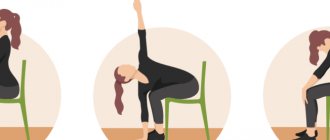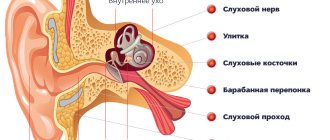Restless legs syndrome (RLS) is a condition characterized by unpleasant, painful sensations in the lower extremities, which appear mainly at rest (usually in the evening and at night) and force the patient to make movements that relieve them, which leads to sleep disturbance.
Medical statistics state that worldwide, from 10 to 25% of the entire adult population have some form of RLS. RLS occurs in all age groups, but is more common in middle and old age. Sometimes remissions may occur, during which the symptoms weaken significantly or disappear altogether. However, symptoms usually reappear after some time and get worse over time. RLS accounts for approximately 15% of cases of chronic insomnia.
Causes
In most cases, RLS occurs in the absence of any other neurological or physical disease. RLS can be primary (ideopathic) or secondary (associated with various pathological conditions).
Medical conditions that may cause secondary RLS.
- Pregnancy
- Peripheral neuropathy
- Iron deficiency
- Radiculopathy
- Kidney failure
- Parkinson's disease
- Spinal cord injuries
- Diabetes
- Postgastrectomy syndrome
- Rheumatoid arthritis
- Abuse of strong drinks, coffee, tea and smoking.
It should be noted that not all patients with these conditions experience RLS. Sometimes there are familial cases when the disease is observed in several generations.
What is it like to suffer from RLS?
Patient Joy, 49 years old, was diagnosed with restless legs syndrome in 2006 at the age of 36 years. She says: “I endured the disease for several years until it debilitated me so much that I was forced to seek medical help. I couldn’t concentrate on anything, I constantly felt overwhelmed. It was very unpleasant."
Joy eventually sought help from a specialized sleep center, where she was able to receive help through a combination of medications as well as lifestyle changes. Medication therapy and the elimination of stimulants such as caffeine and sugar helped her sleep quality. However, this treatment may not be suitable for all patients, as there are factors that predispose to the development of RLS, many of which are still unknown. There is no “gold standard” of treatment and much depends on an individual approach.
Symptoms
First of all, RLS is characterized by the appearance of unpleasant sensations in the lower extremities . This is most often not pain, but itching, trembling, burning, stretching, a feeling of internal tension, fullness, tingling and twitching in the depths of the legs, thighs, and feet. These sensations occur in waves, every 5-30 seconds. They usually occur at rest: while sitting or lying down, and especially when falling asleep. To alleviate their condition, patients are forced to stretch and bend their limbs, shake, rub and massage them, toss and turn in bed, get up and walk around the room, or shift from foot to foot. During movement, the unpleasant sensations weaken or pass, but as soon as the patient lies down, and sometimes just stops, they intensify again.
RLS symptoms are circadian in nature, i.e. have a clear circadian rhythm , appearing or intensifying in the evening or night hours: between 18 pm and 4 am. Before dawn, symptoms weaken and may disappear altogether in the first half of the day. In severe cases, the characteristic circadian rhythm disappears and symptoms become permanent. They can occur not only in a supine position, but also in a sitting position and can make visiting a movie or theater, or a long trip in public transport unbearable.
The consequence of unpleasant sensations in the legs and the need to constantly move them is sleep disturbance - insomnia . Patients cannot fall asleep for a long time and often wake up at night. The consequence of insomnia is drowsiness and fatigue during the daytime.
Periodic movements of the limbs aggravate sleep disturbances in RLS . During sleep, patients experience involuntary rhythmic short-term twitching of the lower extremities every 5-40 seconds. In mild forms, these movements occur within 1-2 hours after falling asleep, in severe forms they can continue throughout the night.
In idiopathic RLS, clinical manifestations persist throughout life, and in most cases there is a tendency for symptoms to slowly increase, although long-term remissions are possible. Severe restless legs syndrome and, as a consequence, poor health, drowsiness, decreased attentiveness, asthenia significantly reduce a person’s quality of life, making him nervous, irritable, and tired.
Restless legs syndrome
Restless legs syndrome (RLS) is a neurological disease manifested by paresthesias in the lower extremities and their excessive motor activity, mainly at rest or during sleep.
Restless legs syndrome was first described by Thomas Willys in 1672: “In some people, when they are about to sleep and go to bed, there is immediately after a stirring of the tendons, arms and legs, accompanied by colic and such restlessness that the patient cannot sleep, as It’s like he’s under torture.” The modern definition of this syndrome was proposed by the Swedish scientist K. Ekbom in 1945:
Restless legs syndrome can be primary (idiopathic) or secondary.
One of the most likely causes of the development of primary restless legs syndrome is considered to be a deficiency of dopaminergic systems in the subcortical structures of the brain involved in inhibitory processes.
Secondary restless legs syndrome can develop during pregnancy and various pathological conditions.
The main causes of secondary restless legs syndrome are:
- Iron deficiency. Lack of iron disrupts the production of dopamine in the brain, which in turn provokes the development of secondary RLS. A patient's iron stores may become depleted even without clinically significant anemia. Research has shown that decreased iron stores, defined as ferritin levels falling below 50 mcg/L, may cause or worsen symptoms of RLS.
- Neurological disorders. Secondary RLS is often observed with injuries to the spinal cord and peripheral nervous system, as well as peripheral neuropathies of various origins (diabetic, alcoholic, toxic).
- Pregnancy. RLS occurs in 15-20% of women during pregnancy. Symptoms can be quite severe but usually disappear completely within a few weeks of delivery. It is assumed that the causes of RLS during pregnancy may be iron deficiency anemia, folic acid deficiency, hormonal changes and venous congestion in the lower extremities.
- Uremia. Up to 50% of patients with end-stage renal disease have RLS. A correlation was shown between the frequency of RLS and blood urea levels, anemia, peripheral neuropathy and a decrease in parathyroid hormone levels in this category of patients. Particularly severe symptoms are observed directly during dialysis, when the patient is forced to lie motionless for several hours. RLS symptoms have been shown to improve or disappear after kidney transplantation.
- Use of medications. Symptoms of RLS can develop or worsen due to the use of various medications, such as tricyclic antidepressants (amitriptyline, azaphene, etc.), selective serotonin reuptake inhibitors (trazodone, Prozac), lithium preparations, metoclopramide (Reglan), calcium channel blockers (Corinfar, finoptin). Caffeine also makes RLS symptoms worse.
Clinical manifestations of RLS can be grouped into several main symptom complexes:
Unpleasant sensations in the legs. They are usually described as crawling, trembling, tingling, burning, twitching, electric shock, movement under the skin, etc. About 30% of patients characterize these sensations as pain. Sometimes patients cannot accurately describe the nature of the sensations, but they are always extremely unpleasant. These sensations are localized in the thighs, legs, feet and occur in waves every 5-30 seconds. There are significant variations in the severity of these symptoms. In some patients, symptoms may occur only at the beginning of the night, while in others they may continuously disturb throughout the day.
Symptoms are worse with rest. The most characteristic and unusual manifestation of RLS is an increase in sensory or motor symptoms at rest. Patients usually report worsening when sitting or lying down and especially when falling asleep. Usually, it takes from several minutes to an hour for symptoms to appear when you are in a calm state.
Symptoms are relieved by movement. Symptoms are significantly weakened or disappear with movement. Simple walking often has the best effect. In some cases, stretching, bending, exercises on an exercise bike, or simply standing can help.
Symptoms are circadian in nature. Symptoms increase significantly in the evening and in the first half of the night (between 18 pm and 4 am). Before dawn, symptoms weaken and may disappear altogether in the first half of the day.
It should be noted, however, that diagnostic difficulties can sometimes arise in the differential diagnosis of primary and secondary restless legs syndrome. Since there are no accurate biochemical markers of primary RLS, it is not possible to say definitively whether the above condition is the cause of secondary RLS, or whether it merely provoked the clinical manifestations of primary RLS.
Valuable diagnostic information to confirm the presence of restless legs syndrome can be obtained by performing polysomnography, a method of long-term recording of various physiological parameters during sleep.
If you or your relatives want to fully relax during sleep, we are waiting for you at the somnology department of the Diagnostic and Treatment Center of the International Institute of Biological Systems named after S.M. Berezina.
Give yourself a healthy sleep!
How common is RLS?
According to expert Richard Allen, a doctor at Johns Hopkins University and a spokesman for the American College of Sleep Medicine, restless legs syndrome is not that uncommon. “A severe form is diagnosed in 0.8% of the population. It's not rare, but it's not common either, explains Richard Allen. – A milder, but still clinically significant form, occurs in 2-3% of people. It is followed by the episodic form, which already affects 5-10% of the population.”
Interestingly, some people may suffer from RLS without knowing that the disorder exists. The expert explains: “Many people suffer seriously from involuntary leg movements at night, but attribute these symptoms to other reasons.”
How else does RLS affect quality of life?
President of the European Federation of Neurological Associations (EFNA) and former president of the European Union for Restless Legs Syndrome (EARL), Joke Jaarsama, says restless legs syndrome is often underdiagnosed. “RLS is still not widely recognized and/or taken seriously,” she explains. – Although some medications are used to treat this condition, there are still no specifically developed drugs. Many neurologists still don’t even know about the existence of RLS.”
and are forced to get up several times a night for long periods of time. This has a huge impact on their daily and often professional lives (many people are unable to go to work). In addition, due to the symptoms of RLS, many patients feel unwell in the evening, so many social events (theater, cinema, parties) become almost impossible for them. Traveling, especially by air, is also difficult for people with RLS, as constant movement on an airplane is prohibited.
RLS is often genetic. Children can also suffer from RLS. In these cases, it is sometimes confused with attention deficit hyperactivity disorder.”
hatmedicine
When I was little, I loved to shake my leg. My mother often made comments to me about this.
I stopped shaking, but my body itself demanded it and sometimes I started over. Indeed, from the outside it may look ugly.
Have you ever wondered why sometimes we sit, shake our legs, when grief comes upon us, sit on a chair, rock back and forth, finger our rosary with our hands, etc. These are all stereotypical movements with a repeating cycle. And this is nothing more than cyclic fractal movements.
This begins in childhood when the child is breastfed and then sucks on a pacifier.
This is because the body requires it, this is because the cells themselves are arranged in a fractal manner.
Let's look at the arrangement of cells in a normal prostate. The cells are arranged in symmetrical circles. This vaguely resembles metal filings, arranged in the form of fields when a magnet is brought to them. This is an experiment we did at school.
Now let's look at the location of the cells of the diseased prostate (second image). It can be seen that the symmetry (fractality) of the cell arrangement is violated. One cell is located in one direction, the other in another. The cells are arranged randomly. Order turned into chaos. Dilated blood vessels and hemorrhages are visible. There are all signs of inflammation on the face. Please note that when a dog is healthy, its coat is smooth and arranged in regular rows. This is because the cells where the hair comes out are arranged like this. And a sick dog’s hair sticks out in different directions. This is because the cells have changed their position relative to each other.
The same thing happens with any inflammatory process in other organs.
Even ordinary back pain or headache is accompanied by a violation of the fractal arrangement of cells. Just not in the same size as shown in the photograph of the “sick” prostate. A slight change in the fractal arrangement of cells in the head region leads to headaches.
We can observe the same thing on young trees when the leaves are arranged in regular rows. In old trees, sectoral drying of branches is observed.
If we constantly do the same exercises, the body remembers these movements. Over time, we perform these movements faster and faster. That is, we switch to “automatic”. On an “automatic” basis, the body adapts to a different type of metabolic process and uses much less energy. The transition to an automatic process is possible only on fractal structures, which are our cells.
I have always been amazed at birds that flap their wings so many times, fly across vast spaces and never get tired. The fact is that their cells also switch to an automatic mode in which metabolic processes are minimal.
What is the practical conclusion from all that has been said?
1. When my son shakes his leg or shifts from foot to foot, I do not reprimand him unless he is in a public place.
2. To maintain the normal fractal arrangement of cells, rhythmic, repeated exercises are necessary. Therefore, physical exercise is absolutely necessary.
3. Rhythmic, repetitive movements are necessary for different muscle groups to overcome cellular chaos.
Each muscle appears to be connected to corresponding organs. Therefore, by involving different muscles, we help normalize the restoration of the fractal structure of the organ cells. For example, the same prostate.
In addition, it is interesting to note that in case of prostate diseases, doctors recommend normalizing sex life. During sexual activity, rhythmic movements are also performed, which ultimately has a beneficial effect on both the functioning of the prostate and the entire body.










